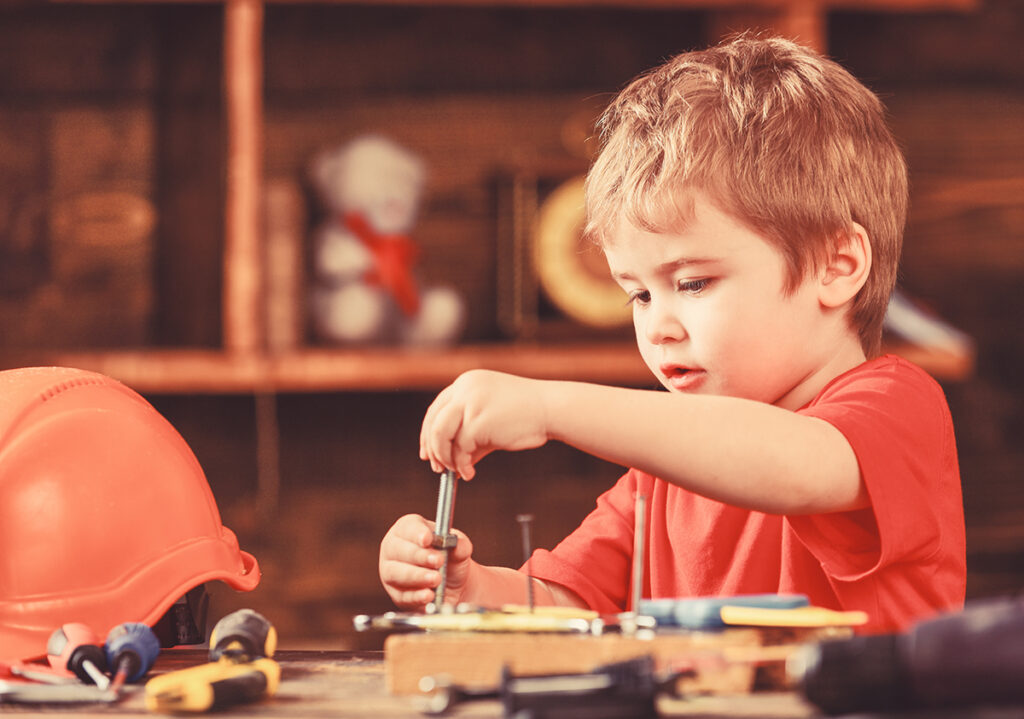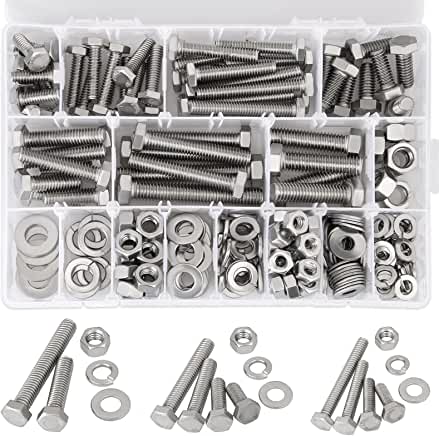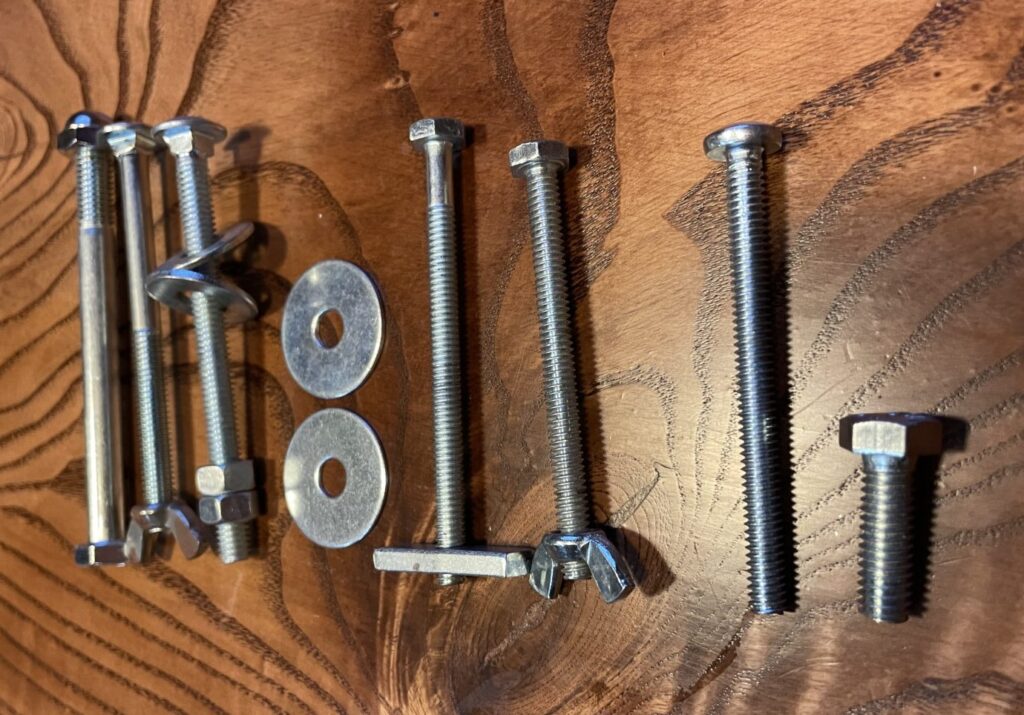Tinkering with Nuts and Bolts

“Hey Trey! Want to play hardware store?” asks Jamie.
The hardware store that Jamie is referring to? It’s not really a store at all, but an area that we set up at our center to give children an opportunity to play with nuts, washers and bolts. The activity turned out to be a surprise hit—and it continues to be a popular pastime.
Setting up this activity for your own aspiring engineers and STEM explorers is as simple as raiding a toolbox or asking parents, grandparents, neighbors and friends to donate random washers, nuts, bolts and wing nuts to your “hardware store.” I’m married to a carpenter, so we had a lot of these items on hand. But you can also put a set like the one pictured below on your classroom wish list.
Call it engineering or physics or tinkering with science, but your students will just call it fun!

I originally brought these materials into our center’s play space to give the children more opportunities to develop their fine-motor skills. When children grasp the nuts and bolts, they use their eye-hand coordination to place the right-sized nut onto the right-sized bolt.
As our “tinkerers” twist and turn and pinch the nuts and bolts during this activity, they are strengthening their small hand muscles, which will help them hold a pencil and wield a pair of scissors with confidence down the road.
When children practice the twisting motion that is required to rotate a nut onto a bolt, they are not only increasing their hand strength, but improving their grip and developing their “bilateral coordination” as they use both hands to work on a task at once.
That’s a lot learning packed into some very simple fasteners!

“I need a bigger nut to fit on this bolt,” declares Melanie. “Does anybody have one?”
“Try this one,” says four-year-old Tyreek, offering her a nut from his pile. “It looks bigger than the one you have.”
I love watching these moments of cooperation as the children work on their oral language and communication skills.
They are also building their science and math vocabulary. As the children sort, compare and classify the nuts and bolts, I hear STEM vocabulary words such as bigger, smaller, thicker, skinnier, shorter and longer.
Nuts and bolts come in all different shapes and sizes. When children match pieces by size and shape, they are using their cognitive (thinking) skills! They are busy measuring, stacking and screwing as they experiment and theorize about what fits where.
This is a matching game that is self-correcting. Why? Nuts and bolts will not fit together if the wrong pieces are chosen. No one needs to tell children that they have chosen a nut that’s too large or too small. The children will see it, feel it and figure it out. This is hands-on learning at it’s finest!
By giving young children an opportunity to work with actual tools, instead of toys, you give them access to real-world experiences that plastic substitutes can’t match.
Real, authentic materials—which have the same weight and texture as the nuts and bolts that children will see during a trip to their local hardware store—add another dimension to the learning experience.
If the early learners at our center had played with large, colorful, plastic toy screws and nuts, would they have associated those toys with the metal fasteners that they see on their tricycles and bedroom furniture? Would they have named this activity “The Hardware Store” if the materials that they had worked with were plastic? Maybe not. Real tools make this activity more relevant to real-world situations—with the added bonus of feeling much more “grown-up” and fun!
One of the other bonuses of this activity? The atmosphere of calm concentration and determination that settles over the room as our preschoolers problem-solve. When children slow down to work through a challenge like this, they lengthen their attention spans, sharpen their focusing skills and develop positive traits such as perseverance when frustration sets in.

“I can’t get it started!” mutters Stephen, his frustration rising.
Screwing a nut onto a bolt takes practice, patience, accuracy and a perfect start. If you don’t get the nut lined up correctly, it comes to a complete stop after a turn or two.
But that doesn’t keep even the youngest of children from participating in this activity. Some of the younger children in the group will simply sort the nuts and bolts by size, while others will line them up in order from biggest to smallest. Just by choosing, analyzing and sorting the hardware pieces, younger children will give those little fingers and hands a workout!
I know teachers who simply dump a bunch of nuts and bolts into their sensory bins. I tried that approach, but I prefer keeping mine in a basket that I can set on a table. Why? Years of observation have taught me that children are likely to carry the sensory bins to another location to investigate their contents, leaving other children out of the activity. I’ve also noticed that younger learners need the steadiness that sitting provides, as well as a good work surface. When I keep the materials—and the children—at a table, it’s also easier for me to keep an eye on the group and intervene if necessary.
When you set the stage for young children to become curious and confident young scientists and engineers, you open doors to early STEM exploration and discovery.
Remember to select nuts and bolts that are appropriate for the age and developmental levels of the children in your care. The beauty of nuts and bolts is that they are available in really large sizes. Choose sizes that will eliminate any possibility of choking!
This is a loose-parts activity, and more isn’t always better—it’s just more. You can always add more parts later, if they are needed.
This is a great activity for indoor play during inclement weather or outdoor play when the weather warms up. Keep it simple and keep it fun!
